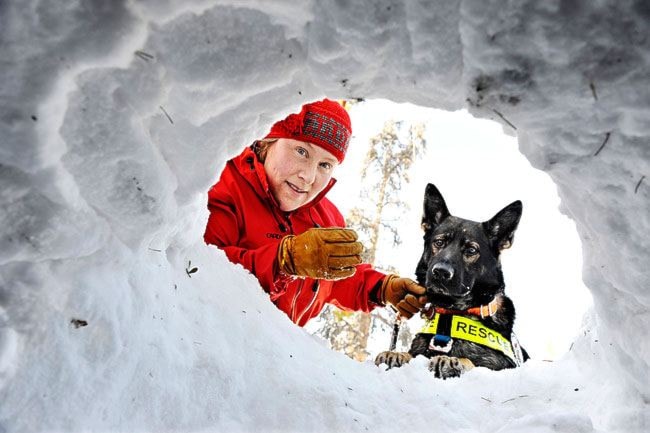Considering the deadliest avalanche known in North America happened on the Chilkoot Trail in April 1898, killing an estimated 63 people, it might seem odd that very location is not covered by the Canadian Avalanche Centre’s forecasting system.
Granted, there are not thousands heading over the White Pass by foot these days, but the area is not without incident - even in recent years.
However, the Yukon Avalanche Association, which was formed in the spring, hopes to eliminate some of the dangers people face from avalanches in that part of the backcountry.
“It’s kind of the culmination of about 20 years of work by individuals working in the avalanche safety field in the Yukon,” said avalanche association president Kirstie Simpson. “Finally we pulled all those avalanche practitioners and public safety folks together.
“It’s from a build-up of more and more use of the backcountry, more interest from the schools that have curriculum, incidents that are occurring - those kind of things.”
In the last 20 years, that region of the Yukon has seen six avalanche fatalities, including skiers, a snowmobiler, a researcher and even a child playing in the snow.
The association hopes to reduce further incidents two ways. First, by continued use of the of the avalanche centre’s bulletin board where people of all stripes can report avalanche sightings, signs of impeding avalanches and even weather. The second initiative - a much more costly one - is the installation of snow-testing and weather stations.
Information taken from those two sources, combined with information from US Parks, Parks Canada and highway weather programs, can be used to establish an avalanche forecasting system, based on an international rating system.
“It’s a standard system, but we don’t apply it in the Yukon right now because we don’t have enough data,” said Simpson. “You can’t establish a regional weather forecast on the basis of one weather station. So, for us to do an avalanche bulletin, we need to establish additional weather stations.”
The avalanche centre’s bulletin board, which includes Yukon postings in the section titled “Klondike,” has been in place since 2004.
“The system has been in place for about 30 years for BC and Alberta, so we’ll just be adding Yukon to the standard system of avalanche warning,” said Simpson. “That, of course, depends on us getting the funding we’ve applied for.”
While firsthand accounts from the public are free, the installation of a fully integrated system comes with a hefty price tag. The avalanche association believes the system could cost close to a $1 million, which the association has applied for federal funding to cover, and could be in place - if they receive the funding - as early as December 2012.
“We’re very close to a million dollars in costs to get it going as a two-year program - it’s not cheap,” said Simpson.
While the technology the association is seeking will provide empirical information, the association can’t stress enough the importance of people reporting what they see - or don’t see - in the backcountry.
“Information on what you don’t see is equally important - if you’re seeing something or not seeing something,” said Simpson. “If you’re out in the backcountry and you’re not hearing or seeing anything, that’s just as important.
“The other important thing is reporting on weather. They are all little pieces of a big puzzle.”
For more information, to become a member, or perhaps to report an avalanche sighting, visit association’s website at www.yukonavalanche.ca.
Contact Tom Patrick at
tomp@yukon-news.com
